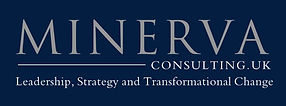
Strategy Execution & Change Capability Development
Leading strategy execution is leading change and transformation, it's leading performance improvement, it's leading projects.
Business leaders face the challenges of VUCA daily — an exponential rate of change, the conflicts of paradox, and market disruption — seeking to undermine your strategic plan and its execution. This is the ‘fog of VUCA’.
This ‘fog’ is compounded by the internal ‘friction’ experienced by leaders in ‘making it happen’.
Friction is the challenge of creating the clarity that aligns thinking and priorities to strategy, reframes mindsets and co-ordinates activity in the face of competing demands, actual progress, and changing context — while simultaneously building people’s emotional engagement in the task at hand.
Whether you call it strategy implementation, strategy execution, or strategic change, there is very probably a gap between what you say you need to do to deliver value (= your strategy), and what people in your organization are actually doing on a day to day basis (= strategy execution). All too often, 'strategic change' piles new work on top of current work without really understanding what matters. Change (or contnuous improvement) also happens at the tactical/operational level is 'process improvements' are made by front line teams. This is promoted in a healthy 'leadership climate'.
Change is often thought of as managing a move from one static state to another static state. Instead of thinking in this way, we propose that organizations embed leadership and structural agility. This enables enterprises to lead, implement and evolve strategy effectively in a dynamic VUCA environment. Recent research shows that such a "dynamic capability" gives enterprises a strong, enduring and differentiating source of competitive advantage.

The Core of 'Dynamic Capability'
We recognise that a problem is any situation in which there is a requirement for a decision on the course of action to pursue —these ‘problems’ may be called projects to deliver, changes to implement, objectives to achieve, tasks to complete and so on. So all ‘work’ consists of a series of concurrent, consecutive and layered problems to solve and decisions to make at different levels of complexity.
Well-designed problem-solving and decision-making practice, and follow-on planning and communication practices, are the key to unlocking change and dynamic strategy execution capability, and to building competitive advantage.
We introduce a suite of three simple, recurring and iterating 'leadership practices' proven to create 'clarity' and 'alignment', and build 'emotional enegagement' through the style of their application. This aids collaboration and communication, increases influence when the authority to make demands on resources is lacking, reduces decision and cycle time, transcends the movement of people around the organization, reduces an individual’s reliance on ‘force of personality’, and the organization’s reliance on ‘personalities’. These practices help you to exploit the fog of VUCA, navigate complexity, and to understand and minimise the effects of friction.
Through this simple suite of common practices, making strategy and higher intent meaningful; clarifying objectives, tasks, priorities, and role-relationships; evolving strategy in the light of actual progress and changed context; and trusting others and being trusted, becomes routine.
We will help you to develop and embed the dynamic capability needed so that the organization takes change and transformation in its stride —today and tomorrow.
How do you compare to these research findings?
-
61% of businesses struggle to bridge the strategy/implementation gap
-
Organizations using a strategy execution system are 7.5 times more likely to be high performing than low performing
-
Businesses which integrate leadership development with strategy execution are 22.7 times more likely to be high performing than those which don't
-
The C-suite and senior managers need to lead a structured process, rather than micro-manage execution
-
"Clever people" seek autonomy, mastery and meaning in their work, people do not need to be motivated to do work that they find satisfying
-
67% of Board members and CEOs do not believe that their current leadership development approach enables successful strategy execution

Please ask for our white paper on fog, friction and strategy execution ‘dynamic capability’.